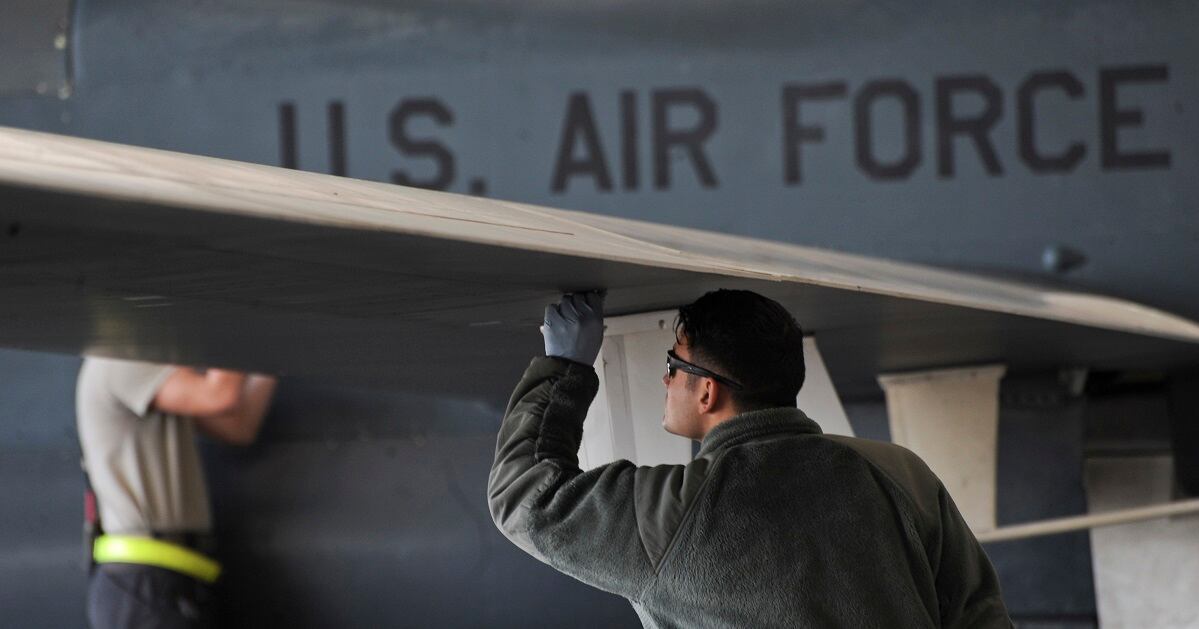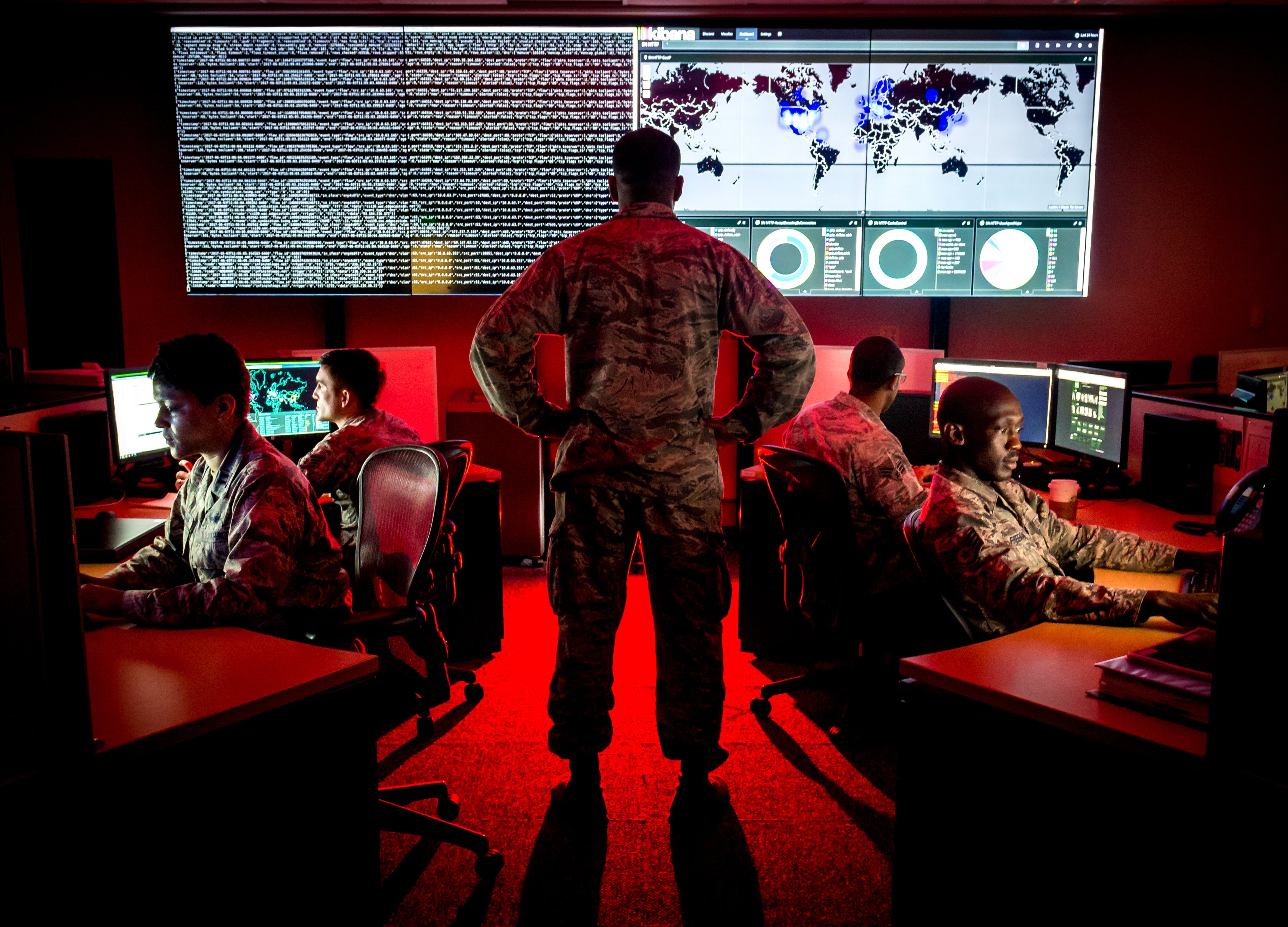The Air Force is realigning the cyber mission force teams it provides to U.S. Cyber Command as a way to have intelligence personnel work more closely with cyber operators.
In the past, Air Forces Cyber was made up of cyber and intelligence personnel from 24th Air Force and 25th Air Force, respectively. However, the arrangement created difficulties with command relationships and oversight of teams since the intelligence operators served beneath a separate Air Force command with a separate commander.
But in October, the Air Force decided to merge 24th and 25th Air Force into 16th Air Force/Air Forces Cyber, placing cyber, intelligence, surveillance and reconnaissance, electronic warfare and weather capabilities under one commander, and creating the Air Force’s first information warfare entity. The new organization also serves as the Air Force’s component to Cyber Command.
RELATED

The new organization of teams moves intelligence forces from the 70th Intelligence, Surveillance and Reconnaissance Wing to the 67th Cyber Operations Wing.
“We looked at the intelligence squadron and focused on the position descriptions that really were supporting the cyber mission force … so that we can merge those intelligence professionals into the cyber operations squadron in order to build the mission elements that supported the combatant command requirements,” Col. Lauren Courchaine, commander of the 67th Cyberspace Operations Group, told C4ISRNET in an interview.
Specifically, these teams are combat mission teams – the teams that conduct cyber operations on behalf of combatant commands mostly in the offensive sphere – and cyber support teams, which provide intelligence, mission planning and other necessary support work for combat mission team.
Officials at the creation of 16th Air Force said the integration would allow the service to provide more robust teams to Cyber Command.
This new structure - with cyber operators, developers and intelligence forces in the same room and read in on the same missions - provides a tighter mission thread, Courchaine said. In the past, she said, when cyber operators needed intelligence support, they’d have to ask their intelligence teammates who weren’t always privy to the mission or technical context, which created gaps.
“Now when you have those conversations with intelligence airmen, operators and developers all in the same forum, sometimes in the same room with the same whiteboard, you come to integrated solutions up front in early vice having to work through a process where that one piece of information, potentially out of context, is levied on the intelligence requirement to somebody that you don’t know in another place … to try to understand truly what the intelligence piece that you’re looking for,” Courchaine, said. “When you fuse all of them together, I think the output is significantly better and drives that operationally speed, the agility and flexibility that [16th Air Force commander] Gen. [Timothy] Haugh is looking after.”
The final realignment package is still at the Air Staff awaiting final approval with details regarding new units still to be determined, to include a new group activated under the 67th Cyberspace Wing and three new squadrons.
Gaining insights from joint operations
The team realignment also extends to Air Force cyber teams that serve under commanders of other services under different Joint Force Headquarters-Cybers.
The way cyber operations are structured within DoD is individual services do not have their own offensive teams. Instead, these teams work through several organizations, each formally known as Joint Force Headquarters-Cyber that exist beneath Cyber Command, which in turn provide planning, targeting, intelligence and cyber capabilities to the combatant commands to which they’re assigned. The heads of the four service cyber components also lead their respective JFHQ-C. These organizations oversee combat mission teams and combat support teams.
Courchaine said the Air Force teams, those that conduct operations in Central Command under Joint Force Headquarters-Cyber and operations focused on China under Joint Force Headquarters-Cyber Fleet Cyber, can bring a global perspective a back to the service. These teams conduct operations on behalf of European Command, Strategic Command, Transportation Command and Space Command.
In some theaters, with the high tempo of operations, such as Central Command, the approach allows the teams conducting operations to bring back lessons learned to their respective services.
“You can see how these three areas will really converge and enable Gen. Haugh from a 16th Air Force perspective to not just be successful in aligning the forces appropriately but driving that return on investment where we’re able to converge target sets globally … to drive operations so that we can influence our adversaries in support of national security objectives,” she said.
Mark Pomerleau is a reporter for C4ISRNET, covering information warfare and cyberspace.








